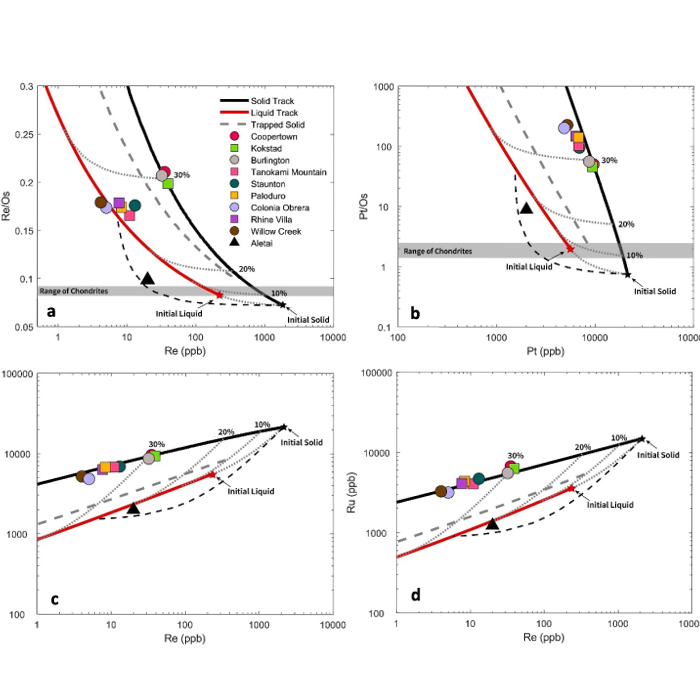
Core & Mantle Studies
Highly siderophile elements (HSE) are widely used to understand planetary accretion and core
formation. Isotope dilution offers a highly sensitive and precise method for determining these element
concentrations. Professor Rich Walker, his students and post-docs have used these elements, in
conjunction with Re-Os and W chronology, to understand the nature of the Earth’s core and mantle.
These methods have also been applied to modelling chondritic meteorite evolution.
Figure: Best-fit fractional crystallization model for isotope systematics in the IIIE iron meteorite group.
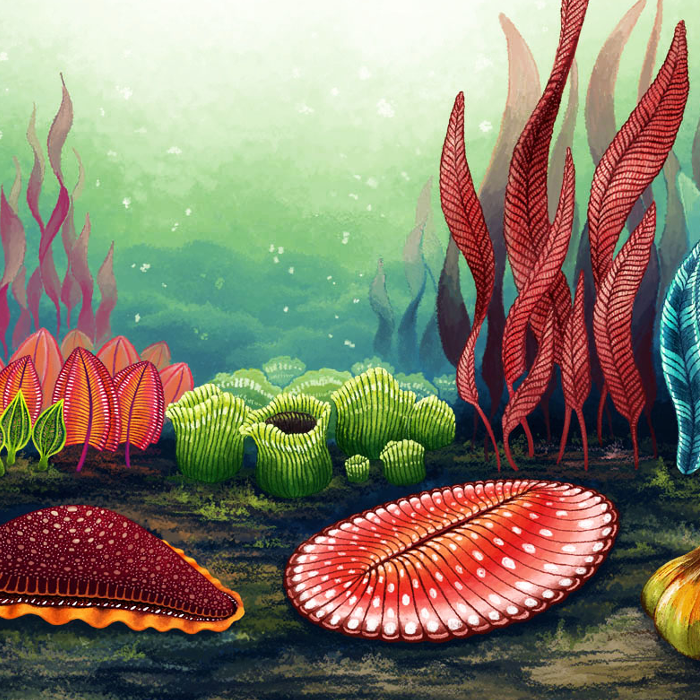
Evolution & Ancient Environments
The ancient Earth environment has been the focus of Professor Jay Kaufman’s research. In the Plasma
Lab he and his colleagues use lithium isotopes to understand the weathering of the continental crust
through time, and uranium stable isotope ratios to constrain the redox state of sediments from ancient
seas. Thus he hopes to understand the atmospheric and ocean environmental conditions during the
origin and earliest evolution of life.
Figure: Garden of Ediacara (credit: Franz Anthony)
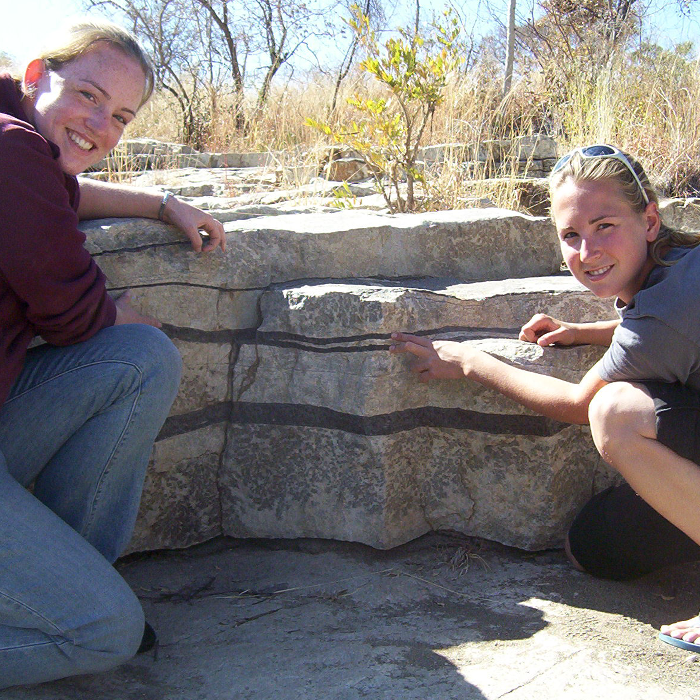
Fluid-Rock Interactions in Oceanic Crust
The subduction of oceanic crust into the mantle is of fundamental importance to understanding how the
Earth works. Professor Sarah Penniston-Dorland uses lithium isotopes and concentrations of fluid
mobile elements in high pressure rocks regurgitated from deep in the subduction zones to understand
the fluid-rock interactions occurring during this process. Furthermore in situ analysis can offer a means
to constrain the maximum depth experiences and a speedometer method for understanding the rise to
the surface.
Figure: Former students of Dr. PD (Rachel and Stephanie) looking at chromitite layers during a field excursion in South Africa.
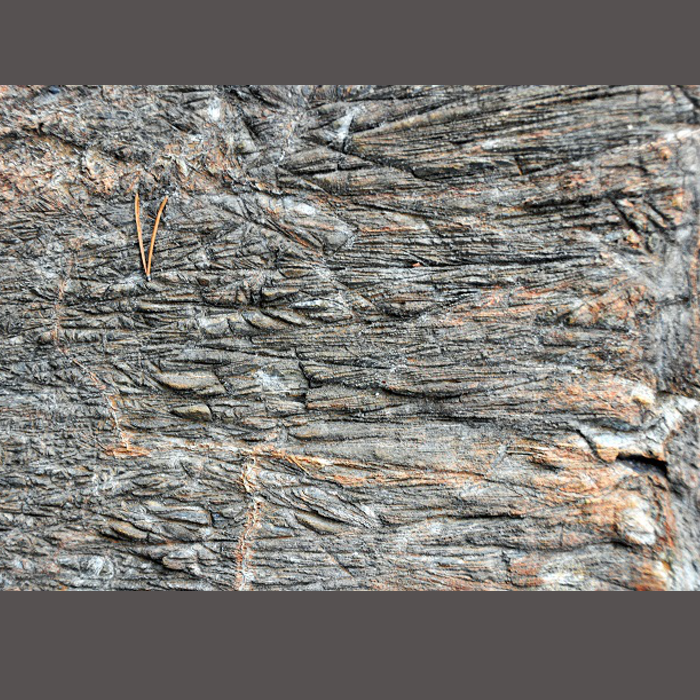
Komatiites: Sources & Systematics
Komatiites offer a unique widow into the Earth’s mantle. Research Scientist Igor Puchtel is a renowned
authority on these igneous rocks. He uses Sm-Nd dating methods, as well as HSE abundances, of these
magnesium-rich lavas to produce models of their changes through time enable him to understand
changes in the source of komatiites. His graduate student, Willie Nicklas, used in situ analysis of
vanadium abundances in komatiites and komatiitic olivine to understand changes in the oxygen fugacity
of the mantle over time.
Figure: Spinifex komatiite. Kidd-Munro Assemblage, Timmins, Ontario, Canada. (credit: James St. John)
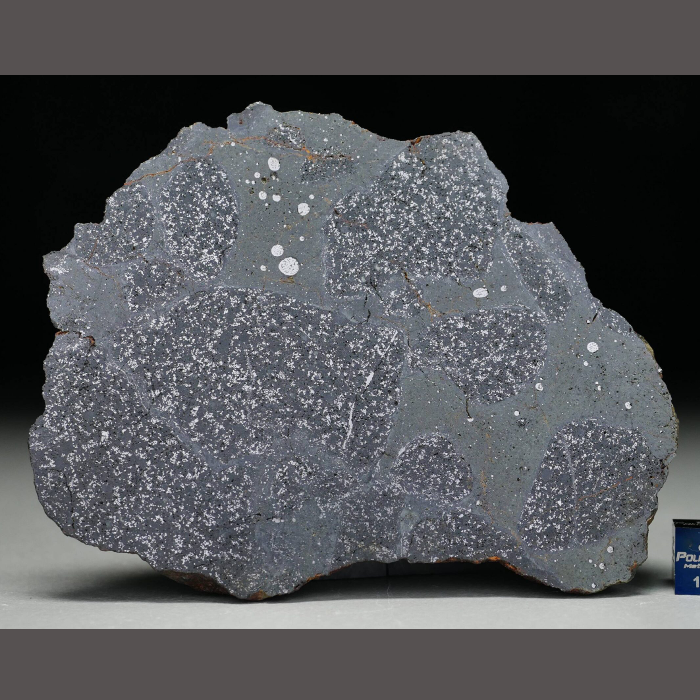
Early Solar System Evolution through the lens of Chondrites
As well as operating the Plasma Lab Research Scientist Richard Ash also has a research program. He
studies chondrites to understand the critical evolution of the early Solar System from an astronomical to
a geological phenomenon. He also uses these materials as proxies for Earth precursors to constrain the
building blocks of the Earth. With his former student, Sam Crossley, he used the highly oxidized R
chondrites investigate the evolution of highly oxidized planetesimals. Currently he is working with
graduate student Tytrice Faison on metals from ordinary chondrites to understand the evolution of the
most abundant meteorites in our collections.
Figure: The ordinary chondrite, Tassedet 004. An H5 impact-melt breccia. (credit: PolandMet)
